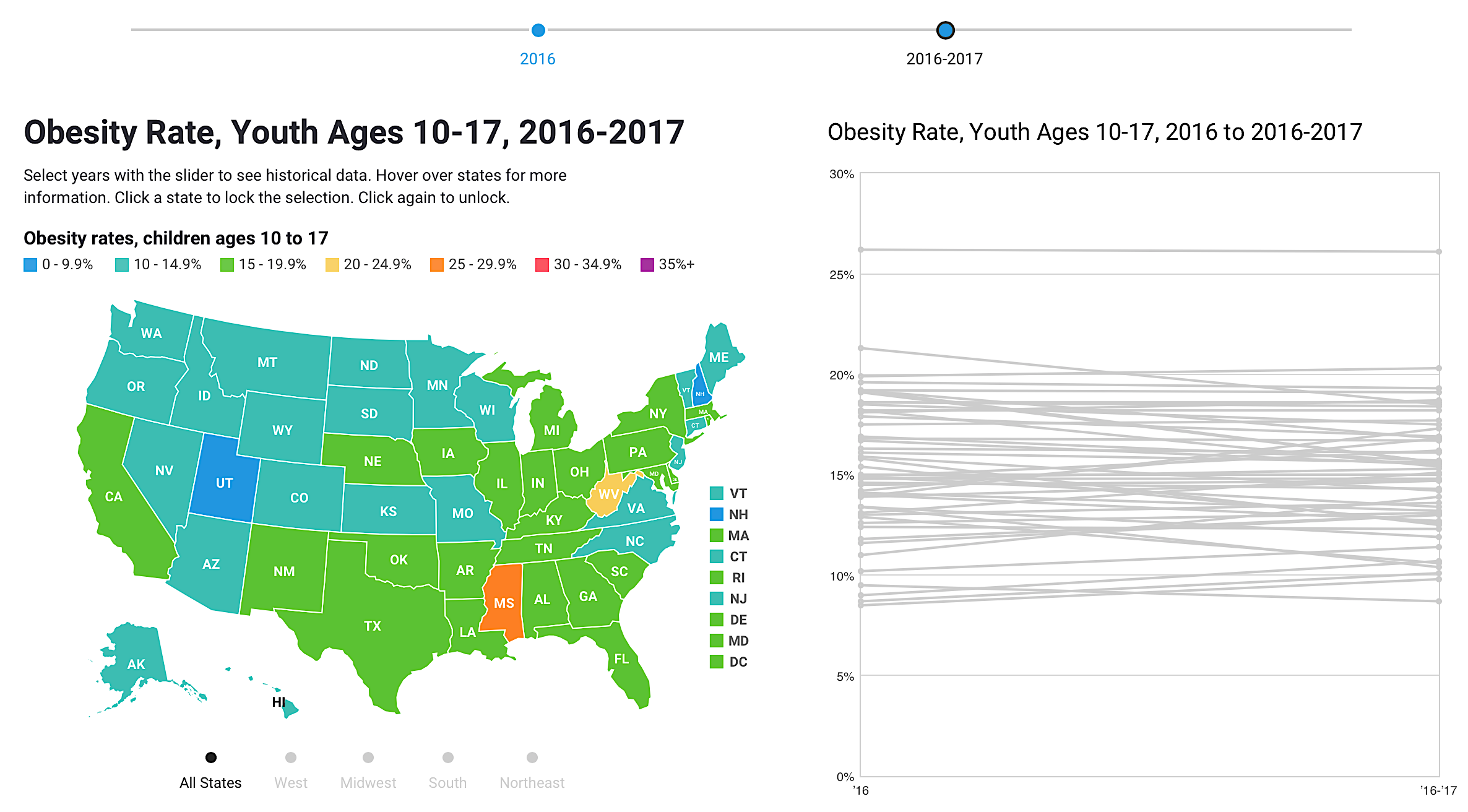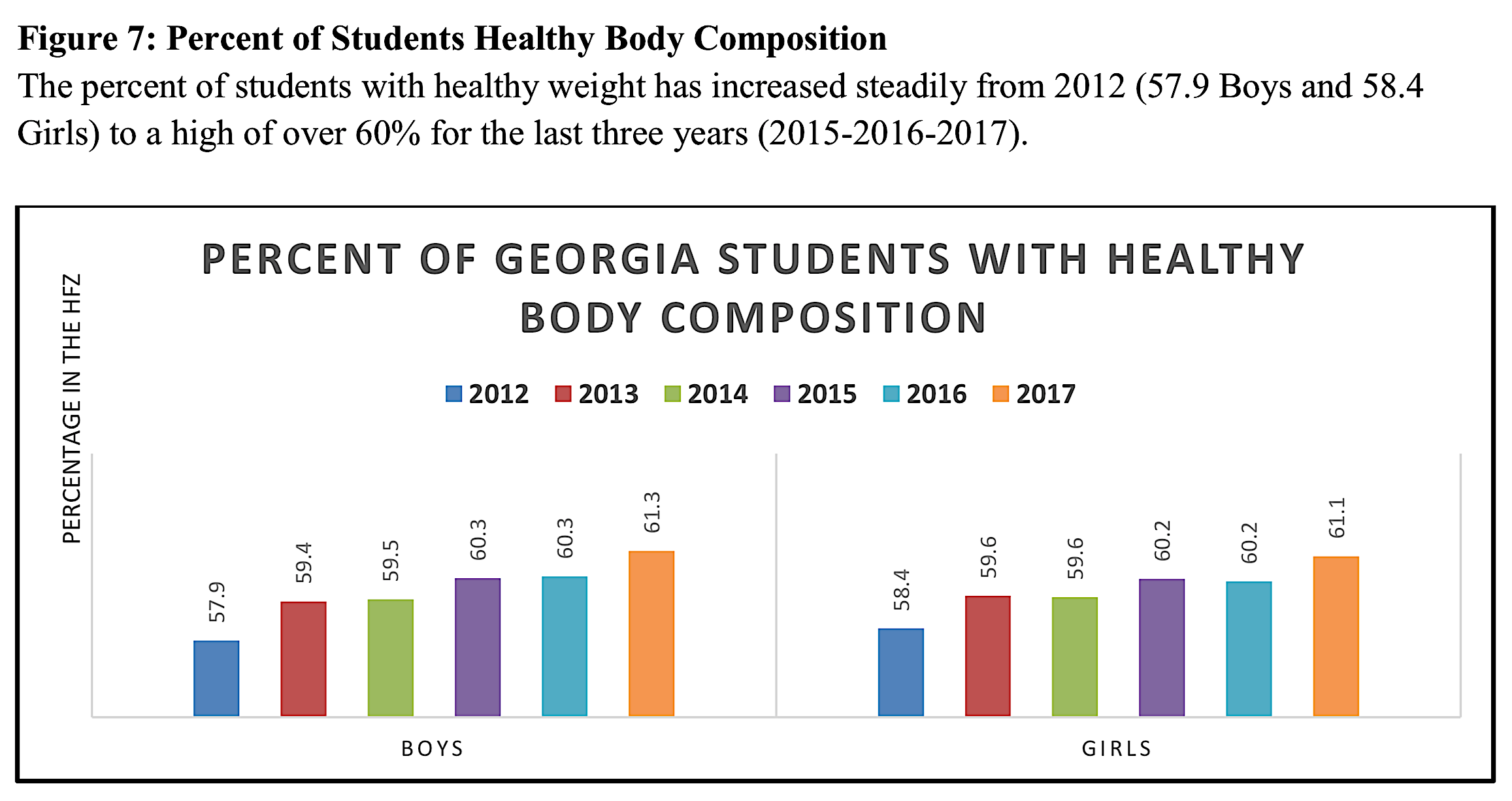Nearly 1 in 5 Georgia youths from ages 10 to 17 are obese, according to a new report. The 18.4 percent figure gives Georgia the eighth-highest rate among states.
The analysis, released this week, also showed racial and ethnic disparities in the obesity figures. In Georgia, the Hispanic youth obesity rate is highest, at 32.8 percent, while black youths were at 23.4 percent and whites at 13.5 percent.
Children who are overweight or who have obesity (a higher level of excess weight) are at greater risk of serious health conditions, including high blood pressure, type 2 diabetes, heart disease and asthma. Research also shows that if children have obesity at an early age, they are more likely to have it later in life.
A month ago, a CDC report found that Georgia’s obesity rate for adults is about average among states. Still, almost one in three adult residents in the state is obese.

The data on youth obesity come from the 2016 and 2017 National Survey of Children’s Health, along with analysis conducted by the Health Resources and Services Administration’s Maternal and Child Health Bureau.
Mississippi has the highest youth obesity rate, at 26.1 percent, while Utah has the lowest, at 8.7 percent. The national average is 15.8 percent.
Several Southern states are in the top 10, according to the new data released by the Robert Wood Johnson Foundation. Along with Mississippi and Georgia, Kentucky ranks third, followed by Louisiana and Oklahoma. Texas is seventh and Alabama ninth.
 Nationally, black youths had nearly double the rate (22.5%) as white youths did (12.5%). The rate for Hispanic youths falls between those two, at 20.6 percent, and Asian youths have the lowest rate, at just 6.4 percent.
Nationally, black youths had nearly double the rate (22.5%) as white youths did (12.5%). The rate for Hispanic youths falls between those two, at 20.6 percent, and Asian youths have the lowest rate, at just 6.4 percent.
Because of a major redesign of the survey, the report authors said it’s not possible to directly compare results from the 2016 or 2017 versions to earlier ones.
The national focus on obesity, meanwhile, has intensified over the past few years. Nutrition labels have become commonplace, schools are serving healthier food, and some communities are developing more parks and greenspace. In addition, consumption of sugar-sweetened beverages has been reduced.
Still, experts see a big challenge ahead. “Childhood obesity continues to be major public health challenge, with significant financial and societal implications,” Jamie Bussel, senior program officer at the Robert Wood Johnson Foundation, said in a statement. “Far too many young people in this country are facing increased chances of diabetes, heart disease, and high blood pressure, all due to a preventable condition.’’

The youth obesity numbers are not surprising, said Dr. Avril Beckford, the chief pediatric officer for Marietta-based WellStar Health System. But she added that she’s hopeful for improvements.
“We’re seeing a lot of fast food and processed food,’’ Beckford told GHN. “I spend a lot of time educating parents. I feel parents across all groups being extremely receptive” to having healthier meals at home.
“While social determinants of health are key to keep investigating, it is not simply a matter of economics,” she said. “It is possible to eat healthy and choose wisely even on a limited budget. Parents are often receptive to education. It is a lifestyle change for the whole family that is required.”
Beckford also emphasizes smaller portion sizes, more exercise, and less “screen time’’ (with computers, TV and phones).
The Georgia Department of Public Health said Thursday that a limitation of the study is that the measures are self-reported by parents.
“While we value large-scale, national studies, . . . we must keep the methodology in perspective,’’ said agency spokeswoman Nancy Nydam.

State officials in 2012 launched Georgia Shape, an obesity prevention initiative created by Gov. Nathan Deal that brought together leaders from government, philanthropy, and the academic and business communities.
Public Health and Shape continue to collect statewide fitness and BMI data, Nydam said, including use of the Fitnessgram, which evaluates students’ aerobic capacity, muscular strength, muscular endurance, flexibility and body composition.
Georgia now has seven years of data using the Fitnessgram tool, which shows the percentage of students with healthy weight has increased steadily since 2012, Nydam said.
Among the foundation report’s recommendations:
- Congress and the White House should maintain and strengthen essential nutrition programs for low-income children and families, such as the Supplemental Nutrition Assistance Program (SNAP), and the Special Supplemental Nutrition Program for Women, Infants, and Children (WIC).
- The U.S. Department of Agriculture should maintain nutrition standards for school meals that were in effect prior to the agency’s interim final rule from November 2017, as well as current nutrition standards for school snacks.
- States should ensure that all students receive at least 60 minutes of physical education or activity during each school day.
- States and localities should ensure all restaurant meals marketed to children meet nutrition standards, and remove sugary drinks from all restaurant children’s meals.







